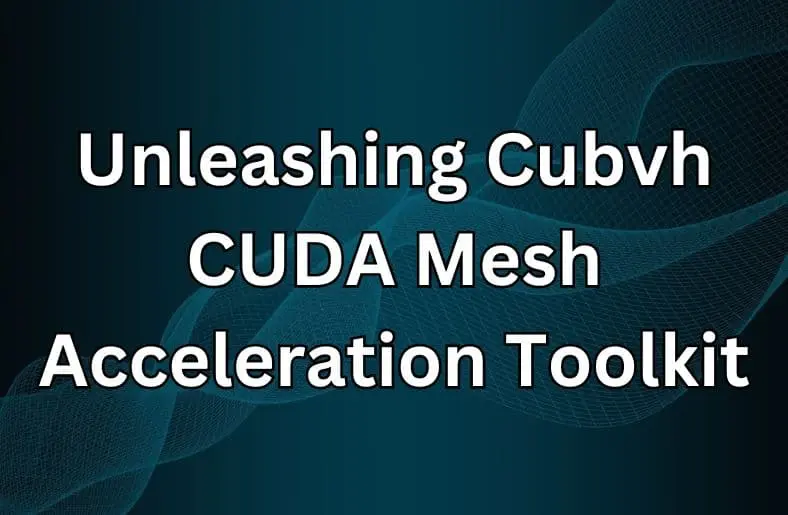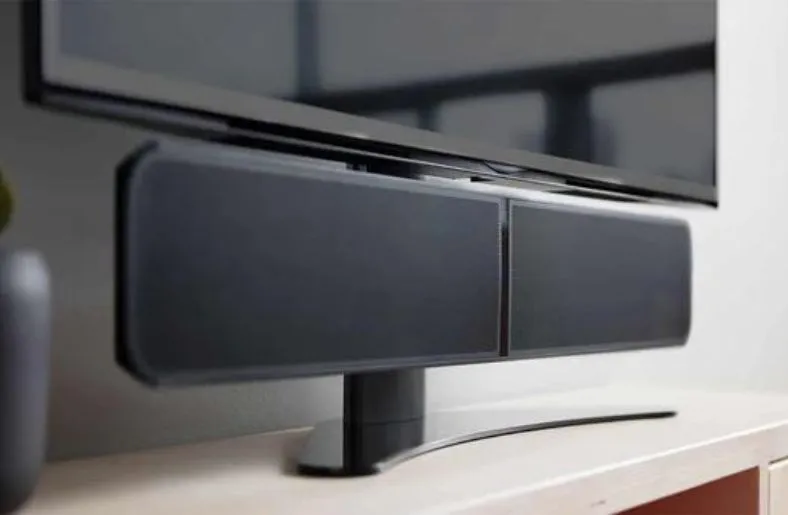Introduction of cubvh
In the dynamic realm of computer graphics and visualization, where speed and efficiency reign supreme, Cubvh emerges as a transformative force. This CUDA Mesh Acceleration Toolkit represents a paradigm shift, empowering developers and researchers with unprecedented capabilities in mesh acceleration.
At its core, Cubvh embodies the fusion of cutting-edge technology and practical innovation. It transcends traditional boundaries, revolutionizing the way we approach BVH (Bounding Volume Hierarchy) acceleration on NVIDIA GPUs. With Cubvh, the complex becomes manageable, the intricate becomes streamlined, and the impossible becomes achievable.
But Cubvh is more than just a toolkit; it’s a gateway to a new era of graphics programming. It opens doors to real-time rendering, immersive simulations, and intricate visualizations previously thought unattainable. As we delve deeper into Cubvh’s features, benefits, and real-world applications, we embark on a journey of discovery and empowerment in the realm of computer graphics acceleration. Join us as we unravel the potential of Cubvh and unleash the full spectrum of GPU-accelerated graphics programming.
Understanding BVH and Its Importance
BVH, short for Bounding Volume Hierarchy, stands as a cornerstone in the realm of computer graphics and visualization. At its essence, BVH is a hierarchical data structure that organizes geometric objects, facilitating efficient operations such as collision detection and ray tracing.
The importance of BVH cannot be overstated, especially in the context of Cubvh. This hierarchical organization enables rapid spatial queries, essential for determining object interactions and light ray intersections. Without BVH, graphics rendering in complex scenes would be a computational nightmare, leading to extended processing times and diminished user experiences.
BVH’s role extends across various domains, including animations, video games, simulations, and scientific visualizations. It acts as a catalyst, enabling smoother animations, realistic game environments, and detailed visual effects. BVH optimizes computational loads, ensuring that graphics applications run seamlessly even in the face of complexity.
In the context of Cubvh, understanding BVH’s intricacies is paramount. Cubvh leverages BVH acceleration, harnessing its power to deliver blazing-fast rendering times and enhanced performance in graphics applications. By comprehending BVH’s importance, developers can unlock the full potential of Cubvh and usher in a new era of high-performance graphics programming.
The Advent of Cubvh
In the ever-evolving landscape of computer graphics and computational acceleration, the arrival of Cubvh marks a significant milestone. Cubvh, which stands for CUDA Mesh BVH Acceleration Toolkit, represents a paradigm shift in how graphics applications harness the power of GPUs for mesh acceleration tasks.
This innovative toolkit embodies a fusion of cutting-edge technology and user-friendly design, making BVH acceleration more accessible and efficient than ever before. Cubvh streamlines the complex process of constructing and managing BVH structures on GPUs, paving the way for faster rendering times and enhanced performance in graphics applications.
What sets Cubvh apart is its focus on leveraging CUDA technology, developed by NVIDIA, for BVH acceleration. CUDA’s parallel computing capabilities enable Cubvh to handle intensive calculations with remarkable speed and precision. This synergy between Cubvh and CUDA revolutionizes graphics rendering, making real-time rendering and complex simulations more achievable.
The advent of Cubvh opens doors to a plethora of possibilities across various industries, from game development and scientific visualization to virtual reality experiences. Its arrival signifies a shift towards high-performance graphics programming, where developers can push boundaries and create immersive, visually stunning environments.
As developers embrace Cubvh, they embark on a journey of accelerated innovation and unparalleled graphics performance. The toolkit’s user-friendly approach, coupled with its powerful features, empowers developers to unleash their creativity and transform ideas into captivating visual experiences. Cubvh’s advent heralds a new era of GPU-accelerated graphics programming, where speed, efficiency, and creativity converge to redefine the boundaries of what’s possible in computer graphics.
Getting Started with Cubvh
Embarking on your journey with Cubvh, the CUDA Mesh BVH Acceleration Toolkit, opens doors to a world of accelerated graphics performance and efficiency. Before diving into the technicalities, it’s essential to have a basic understanding of CUDA programming and graphics rendering concepts.
To begin, ensure you have access to an NVIDIA GPU, as Cubvh is optimized for these GPUs. Installing the CUDA Toolkit on your system is necessary for developing and running Cubvh-accelerated applications.
The installation process for Cubvh is straightforward, and you can start by downloading the latest version from the official repository. Once installed, familiarize yourself with the Cubvh API through detailed documentation and example projects provided. These examples serve as a stepping stone to integrating Cubvh into your own graphics applications.
By following these initial steps, you lay the foundation for leveraging Cubvh’s power in accelerating BVH construction and traversal, ultimately enhancing the performance of your graphics projects.
Advanced Techniques and Best Practices
Delving into advanced techniques and best practices with Cubvh unlocks the full potential of this CUDA Mesh BVH Acceleration Toolkit, allowing developers to optimize graphics applications for superior performance and efficiency.
One of the key aspects of mastering Cubvh is understanding and leveraging its advanced features. These features include optimized functions for handling massive scenes, dynamic objects, and efficient updates to BVH structures. Learning to utilize these features can drastically improve your application’s performance and responsiveness.
Best practices play a crucial role in optimizing BVH construction and traversal. Carefully balancing the depth of your BVH tree and the number of objects per node is vital for optimal performance. Additionally, utilizing spatial partitioning strategies can reduce the complexity of collision detection and ray tracing, further enhancing performance.
Debugging and performance tuning are essential aspects of working with Cubvh. Regular profiling of your application can help identify bottlenecks and optimize performance. Paying attention to memory usage and minimizing data transfers between the CPU and GPU are also critical for maximizing efficiency.
By incorporating advanced techniques and adhering to best practices, developers can create highly efficient and high-performance graphics applications with Cubvh, pushing the boundaries of what’s possible in graphics programming and computational visualization.
Future Directions and Community Engagement
Looking ahead, Cubvh is poised for continuous evolution and enhancement. The roadmap includes improvements in performance, expanded GPU compatibility, and a focus on user-friendly experiences. Anticipated advancements aim to address the demands of real-time rendering and simulation, ensuring its remains at the forefront of graphics acceleration technology.
Community engagement is crucial for its development. Users are encouraged to contribute feedback, report bugs, and suggest new features. Collaboration within the community fosters innovation and drives the toolkit’s ongoing success, empowering developers and researchers to shape the future of graphics programming.
Conclusion
In conclusion, Cubvh stands as a game-changer in the realm of GPU-accelerated graphics programming. Its innovative approach to CUDA Mesh BVH acceleration opens doors to unprecedented speed, efficiency, and creativity in graphics applications. As developers embrace Cubvh and its advanced techniques, the future of graphics programming looks brighter than ever.
With continuous enhancements and community engagement, it is set to redefine the boundaries of what’s possible in real-time rendering, immersive simulations, and complex visualizations. Join the Cubvh community today and unlock the full potential of GPU-accelerated graphics programming.






